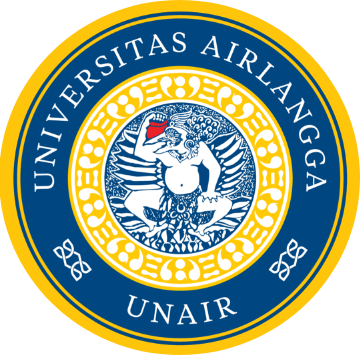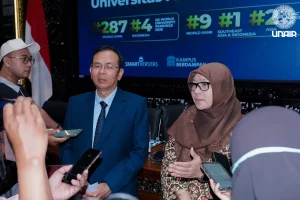UNAIR NEWS – Faculty of Health, Medicine, and Natural Sciences (FIKKIA) Universitas Airlangga (UNAIR) has held another guest lecture by presenting Assoc Prof Kumpanart Soontornvipart from Chulalongkorn University. The guest lecture held on Wednesday, May 15, 2024, and attended by all FIKKIA veterinary students covered the topic of Feline Osteoarthritis.
In his presentation, Prof. Kumpanart explained that osteoarthritis (OA) is a progressive degenerative disease that can get worse over time. OA commonly occurs in the shoulders, elbows, spine, coxofemoral joints, and tarsal bones.
“Research shows that 90 percent of cats older than 12 years have radiographic signs of osteoarthritis in one or more joints,” he revealed.

Clinical symptoms
Osteoarthritis is common in cats, especially older ones. The clinical symptoms of OA in cats are different from those in dogs, often going undetected until the disease reaches an advanced stage. Clinical signs in cats usually include behavioral changes often thought to be a result of aging. For example, reluctance to play around or chase toys.
“Cats naturally love to hunt and keep themselves strong and active. Owners often label cats that are reluctant to do activities as lazy cats. In fact, these cats may be unwilling to play around and run because they have health issues,” he added.
Multimodal Management
Multimodal management of OA in cats includes several approaches to ensure the cat remains comfortable and has a good quality of life. These approaches include administering non-steroidal anti-inflammatory drugs (NSAIDs), client education, weight management, exercise, physical therapy, nutritional therapy, and surgery.
These approaches aim to manage osteoarthritis symptoms holistically and effectively. Administering NSAID helps reduce pain and inflammation. Meanwhile, educating cat owners ensures they understand the importance of proper medication and care.
Weight management is crucial to reducing joint stress, while exercise and physical therapy help maintain mobility and muscle strength. Nutritional therapy, including special diets, supports joint health, and in severe cases, surgery may be an option to improve the cat’s quality of life.
The guest lecture provided valuable insights for veterinary students on handling osteoarthritis in cats, emphasizing the importance of early detection and a comprehensive approach to managing this disease to improve the quality of life for pets.
Drh Bodhi Agustono, Head of the FIKKIA Veterinary Medicine Study Program, hopes that this guest lecture can broaden students’ knowledge into becoming more competent professionals who care about animal welfare.
Author: Bintang Muslimah
Editor: Feri Fenoria
Read also:
FIB guest lecture reveals history introduction through symbol









